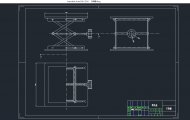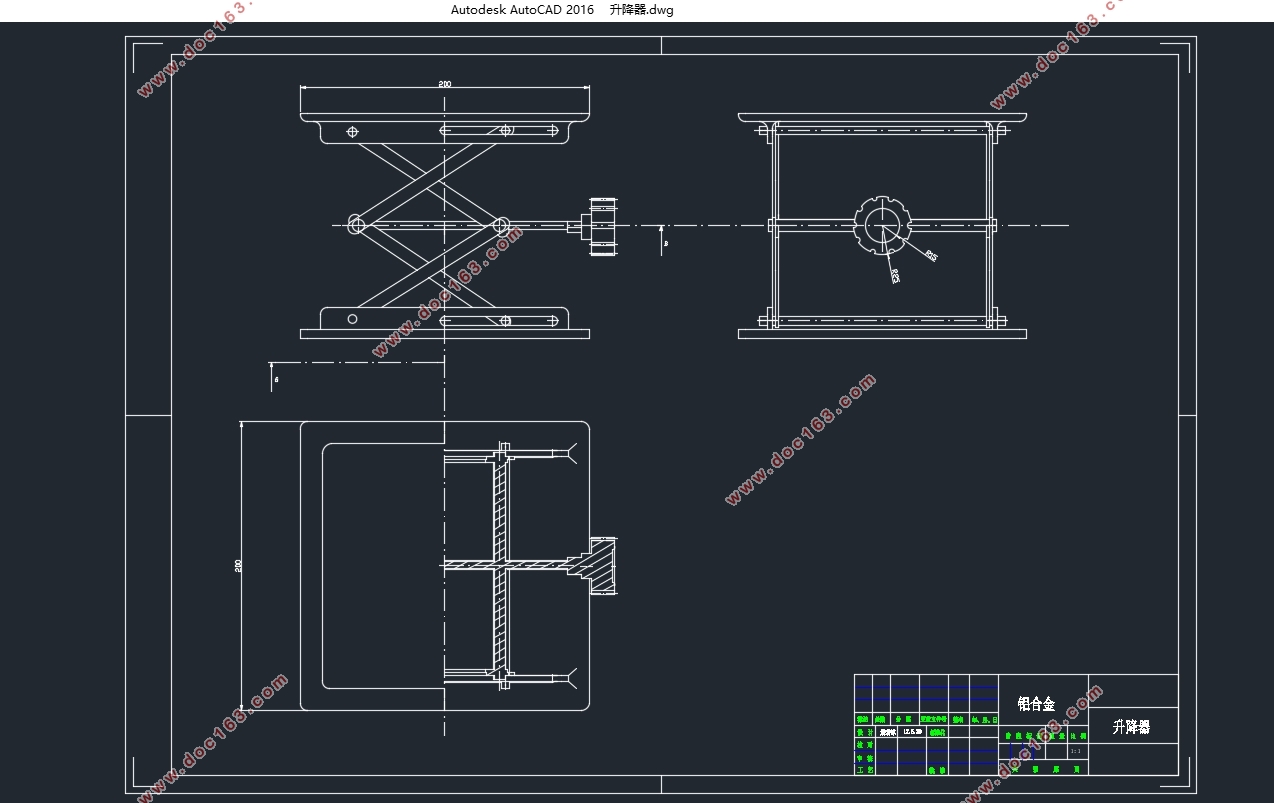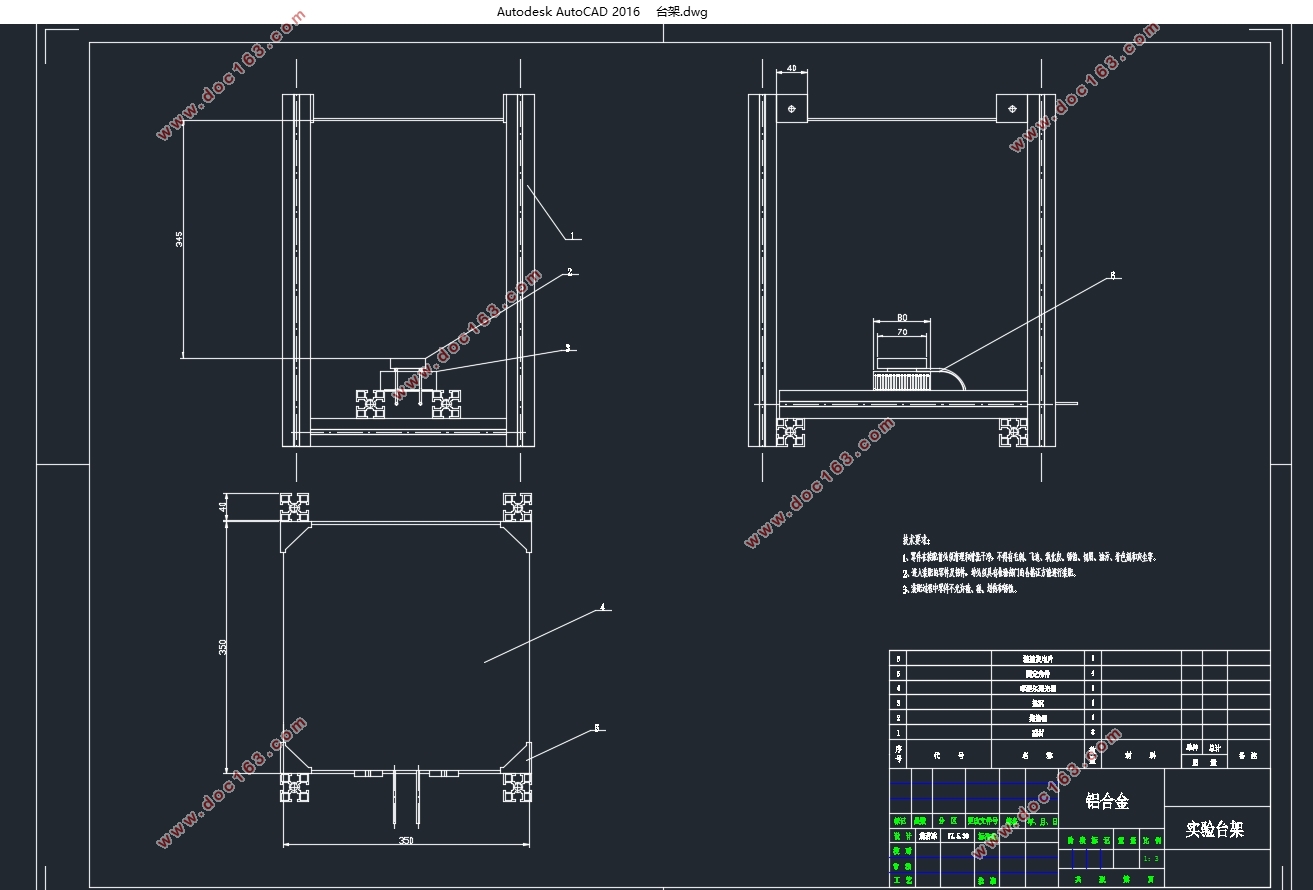汽车太阳能行车通风系统性能研究(含CAD图)

汽车太阳能行车通风系统性能研究(含CAD图)(开题报告,文献摘要,论文说明书31000字,CAD图3张)
摘要
随着经济的不断发展,能源紧缺的问题日益严重,加大对新能源的开发与利用已成为必然需求。作为一种洁净的能源,太阳能既是一次能源,又是可再生能源,有着矿物质能不可比拟的优越性。温差发电技术是一种能够合理利用太阳辐射能这类低品位热源得有效方式。
本文结合了我国能源背景,考虑了国内外热电发电的研究进展,选择了太阳能温差发电手段为行车通风供能,并通过理论分析、建模仿真等手段对其进行了分析。
首先,本文基于热电发电的基本原理,分析了太阳能温差发电的传热过程和发电过程,建立了数学模型,分析了各部分的热损失,得到热平衡方程,确定了传热模型及温差发电最大功率、最大效率和装置总效率的计算式。
然后通过仿真,探讨了太阳能温差发电装置的热电性能的影响因素,确定了在不同工况下温差发电片的输出特性及热损失的变化情况,由此得出装置内聚光器和集热器的最佳匹配关系,为实际运用中选型提供依据.
接着结合通风系统,模拟太阳能温差发电装置装车运用后,了在不同环境下太阳能温差系统的输出特性和行车通风系统的需求特性,并进行了能量匹配、评估了太阳能行车通风系统的通风效果。发现在驻车工况下,太阳能温差发电系统能实时为通风系统供能,并一天能有40W•h的结余;在行车工况下,若需实时通风,需蓄电池补充35W•h的电能,但可满足作为空调辅助,间歇性通风的需求;在行-驻车工况下,可通过蓄电池的充放电满足不同的通风需求。 [资料来源:http://Doc163.com]
最终设计并搭建了单片太阳能温差发电的实验台架,用于验证系统的输出效果,为实际运用提供依据。
关键词:温差发电;太阳能利用;传热;汽车通风;能量管理
Abstract
With the continuous development of economy, energy shortage problem increasingly serious, increasing the development and utilization of new energy has become the inevitable demand. As a kind of clean energy, solar energy is both primary energy and renewable energy, with a superiority which mineral is incomparable. Thermoelectric power generation technology is an effective way of low grade heat source’s utilization like solar radiation energy.
This paper combines the background of energy in our country, considering the domestic and foreign research progress of thermoelectric generator, chose the solar thermoelectric power generation to provide power for the vehicle ventilation, and analyze it through the theoretical analysis, modeling and simulation.
First of all, this article is based on the basic principle of thermoelectric power generation, analyzes the heat transfer process of solar thermoelectric power generation and power generation process, established the mathematical model of heat loss to obtain the heat balance equation. So the heat transfer model and the temperature difference generator maximum power, maximum efficiency and total efficiency calculation formula could be determined. [资料来源:https://www.doc163.com]
And then through simulation, the paper discusses the influence factors of thermoelectric performance for solar thermoelectric power generation device, determines the power output characteristics under different conditions and the change of heat loss, the result get the best matching relations between the concentrator and the collector, and provide the basis for selection in practical application.
Then combined with the ventilation system, simulated solar thermoelectric generator for loading after equipped on car, the output characteristic of solar thermoelectric system and traffic demand characteristics of ventilation system in different environment and their energy matching. And evaluating the ventilation effect. Found in the parking conditions, solar thermoelectric power generation system can real-time provides power for the ventilation system, and a day to 40 w h. balance; In driving condition, if vehicle need real-time ventilation, battery need to supply power, 35 w h, but the system can meet as auxiliary air condition to meet the ventilation requirement intermittently. In driving- parking conditions, the system can meet the demands of different ventilation through the battery charge and discharge. [资料来源:www.doc163.com]
Finally, the paper designs and sets up a experimental platform for the single solar thermoelectric power generation which is used to validate the system output effect and provide the basis for practical application.
Key words: Thermoelectric power generation; Solar energy; Heat transmission; Vehicle ventilation; Energy management
本文工作
本文在太阳能温差发电的基础上,通过理论分析得出热平衡方程,确定了传热模型,并利用MATLAB软件进行仿真,研究了在传热过程中各部分的热损失对装置输出功率及热电效率的影响,并提出优化解决的方法。
通过对聚光器、集热器、热电模块、散热器等部分进行比较和分析,选择合适的部件,设计并组装了一套集热式太阳能温差发电装置。并通过仿真实验条件,从理论上证明了太阳能集热装置的可行性,对最终通风效果进行了评估和能量管理。
论文结构安排如下:
第一章,介绍我国能源背景,分析了太阳能利用前景及其应用方法,阐述了太阳能温差发电原理及其国内外研究进展,并阐述了基于太阳能热电利用的汽车行车通风系统的价值和意义。
第二章,介绍温差发电的五个基本效应和理论模型,确定了得到最大功率和最大热电效率的工况;同时,分析了太阳能温差发电装置的传热过程,分析了各部分的热损失,得到热平衡方程,确定了传热模型。 [资料来源:http://www.doc163.com]
第三章,通过仿真分析,对太阳能温差发电装置性能进行分析,并确定了集热面积和聚光比的匹配关系,比较了辐射热损失、对流热损失对装置最终的输出功率和发电效率的影响,为提高装置总效率提出改善方法。
第四章,通过模拟不同环境,对太阳能温差发电系统的输出特性和通风系统的需求特性进行了分析;评估了太阳能行车通风系统的通风效果,并进行了能量管理与匹配。
第五章,完成了实验部件的选型,并搭建了实验台架,指定了实验方案。
第六章,对全文进行总结与展望。
[资料来源:http://www.doc163.com]





[资料来源:https://www.doc163.com]
目录
摘要 I
Abstract II
第一章 绪论 1
1.1研究背景 1
1.1.1我国能源现状 1
1.1.2太阳能资源 1
1.2太阳能温差发电概述 3
1.2.1太阳能温差发电原理 3
1.2.2国内外研究现状 3
1.3研究目的及意义 4
1.4本文工作 6
第二章 太阳能温差发电的基本原理及模型 7
2.1温差发电的基本效应 7
2.1.1赛贝克效应 7
2.1.2帕尔帖效应 8
2.1.3汤姆逊效应 8
2.1.4焦耳效应 8
2.1.5傅里叶效应 9
2.2温差发电过程的理论分析 9
2.2.1温差发电器的传热模型 9
2.2.2温差发电器的输出功率和热电效率 10
2.3太阳能辐射特点及太阳能发电理论模型 12 [来源:http://Doc163.com]
2.3.1太阳能辐射及其光谱 12
2.3.2太阳能温差发电传热模型 13
2.4本章小结 15
第三章 太阳能温差发电装置性能分析 17
3.1太阳能温差发电装置描述 17
3.2聚光比与集热面积的匹配 18
3.3热对流损失 22
3.4热辐射损失 25
3.5本章小结 28
第四章 太阳能行车通风系统效果仿真 30
4.1太阳能行车通风系统描述 30
4.2太阳能行车通风系统性能分析 31
4.2.1太阳能温差发电系统驻车工况分析 32
4.2.2太阳能温差发电系统行车工况分析 34
4.2.3通风系统分析 36
4.2.3小结 38
4.3 太阳能行车通风系统效果分析 38
4.1 太阳能动态仿真分析 38
4.3.2太阳能温差发电系统输出功率 39
4.3.3太阳能行车通风系统能量管理 40 [资料来源:http://Doc163.com]
4.4本章小结 43
第五章 太阳能温差发电系统实验研究 44
5.1实验台架的建立 44
5.1.1实验设备的确定 44
5.1.2实验台架的设计与搭建 47
5.2实验方案和步骤 48
5.2.1实验内容 48
5.2.2实验方法和步骤 49
5.3本章小结 49
第六章 总结与展望 50
6.1全文总结 50
6.2展望 50
参考文献 52
致谢 55
上一篇:福田奥铃中型货车中间轴式5挡手动变速器设计(含CAD零件图装配图)
下一篇:雪铁龙富康轿车后悬架减振器设计(含CAD零件图装配图)
